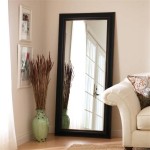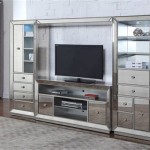Car Seat Obstruction of Rear View Mirror: Impacts and Solutions
The proper installation and usage of car seats are paramount for child passenger safety. However, the presence of a car seat, particularly a rear-facing one, can sometimes create an obstruction, limiting the driver's visibility through the rear view mirror. This obstruction can present a potential safety hazard, affecting the driver's awareness of the surroundings and potentially increasing the risk of accidents. This article examines the issues related to car seat interference with rear view mirror visibility, analyzing the factors that contribute to the problem and exploring potential solutions and mitigation strategies.
The rear view mirror is a critical component for safe driving, providing a direct line of sight to the area behind the vehicle. It allows drivers to monitor traffic conditions, identify approaching vehicles, and make informed decisions about lane changes, merging, and reversing. Any obstruction that significantly diminishes this field of view can compromise the driver's ability to react effectively to changing traffic situations. Car seats, especially those designed for infants and younger children, are often bulky and positioned in a way that directly impacts the area visible through the rear view mirror.
Factors Contributing to Rear View Mirror Obstruction
Several factors contribute to the problem of car seat interference with rear view mirror visibility. These factors encompass the design of the car seat itself, the size and configuration of the vehicle, and the positioning of the car seat within the vehicle.
Car Seat Design: Rear-facing car seats, which are mandatory for infants and recommended for toddlers up to a certain age and weight, tend to be the primary culprit. These car seats are designed to provide maximum protection in the event of a frontal collision, but their larger size and reclined positioning can significantly block the driver's view. The height and width of the car seat's headrest and side impact protection features further contribute to the obstruction. As children transition to forward-facing car seats, the view may improve, but some models still present a visibility challenge, especially those with high backs and extended headrests.
Vehicle Size and Configuration: Smaller vehicles with limited rear window space are more likely to experience significant obstruction from a car seat. The angle of the rear window, the height of the vehicle's rear seats, and the overall interior dimensions all play a role in determining the extent of the visibility issue. In compact cars, the car seat is often positioned close to the rear window, maximizing the blockage of the rear view mirror's field of vision. Larger vehicles, such as SUVs and minivans, may offer more flexibility in car seat placement and a wider rear window, which can mitigate the problem to some degree.
Car Seat Positioning: The location of the car seat within the vehicle also impacts the level of obstruction. Car seat installation guidelines typically recommend placing the car seat in the center rear seat whenever possible, as this is considered the safest position in the event of a side impact collision. However, a centrally positioned car seat can directly block the driver's view through the rear view mirror. Placing the car seat on either the driver's side or passenger's side rear seat may improve visibility, but this must be balanced against safety considerations related to side impact protection. In situations with multiple car seats, the placement of each individual car seat may further contribute to impaired visibility. The angle of the car seat installation can also inadvertently affect the visibility. Minor adjustments in the seat angle may provide slight improvements.
Impact on Driver Safety
The diminished rear view visibility caused by a car seat can have several negative impacts on driver safety. These include reduced awareness of surrounding traffic, difficulty in performing certain maneuvers, and an increased risk of accidents.
Reduced Awareness of Surrounding Traffic: A blocked rear view mirror limits the driver's ability to monitor vehicles approaching from behind. This can make it difficult to anticipate potential hazards, such as speeding vehicles or tailgaters. The driver may also struggle to identify motorcycles or smaller vehicles that are partially obscured by the car seat. The reduced awareness can lead to delayed reaction times and a greater likelihood of being involved in a collision.
Difficulty in Performing Maneuvers: Simple maneuvers, such as lane changes and merging onto highways, rely heavily on the driver's ability to assess the traffic situation behind the vehicle. A car seat that blocks the rear view mirror can make these maneuvers more challenging and potentially dangerous. The driver may have to rely more heavily on side mirrors, which provide a narrower field of view and may not fully compensate for the obstructed rear view. Reversing the vehicle, especially in tight spaces, can also become more difficult and increase the risk of hitting pedestrians or other objects.
Increased Risk of Accidents: The combination of reduced awareness and difficulty in performing maneuvers increases the overall risk of accidents. Drivers with obstructed rear views may be more likely to misjudge distances, fail to see approaching vehicles, or make unsafe lane changes. This is particularly concerning in situations with heavy traffic or adverse weather conditions, where visibility is already compromised. While crash statistics directly attributing accidents to car seat obstruction are difficult to isolate, the correlation between reduced visibility and increased accident risk is well-established. Driving with reduced visibility can increase stress and fatigue. Drivers may compensate by craning their necks, which reduces focus on the road.
Mitigation Strategies and Solutions
While completely eliminating the obstruction caused by a car seat may not always be possible, several strategies can be employed to mitigate the impact and improve driver visibility. These include repositioning the car seat, utilizing alternative mirrors, and adjusting driving habits.
Repositioning the Car Seat: Experimenting with different car seat positions within the vehicle can sometimes improve visibility. While the center rear seat is generally considered the safest, moving the car seat to one of the outboard positions (driver's side or passenger's side) may provide a clearer view through the rear view mirror. It is crucial to ensure that the car seat is properly installed and secured in any position, following the manufacturer's instructions and local safety guidelines. Consulting with a certified child passenger safety technician can help determine the optimal car seat placement for both safety and visibility. Adjustments to seat angle are also beneficial, provided they are within the manufacturer's specifications. The angle of the seat can be adjusted to allow a slightly better view.
Utilizing Alternative Mirrors: Several alternative mirror options can help compensate for the obstructed rear view. Wide-angle mirrors, which can be attached to the existing rear view mirror or used as a replacement, provide a broader field of vision and can help the driver see more of the area behind the vehicle. Blind spot mirrors, which are small convex mirrors that attach to the side mirrors, can also improve visibility by revealing areas that are not visible in the standard side mirrors. Some vehicles are equipped with rearview cameras that provide a live video feed of the area behind the vehicle, which can be especially helpful when reversing. These systems are particularly useful when a car seat is blocking the view.
Adjusting Driving Habits: In situations where rear view visibility is limited, it is important for drivers to adjust their driving habits accordingly. This includes increasing the frequency of checking side mirrors, being more cautious when changing lanes or merging, and maintaining a greater following distance from other vehicles. It is also important to be extra vigilant when reversing and to use a spotter if possible. Being aware of the limitations imposed by the obstructed rear view and adjusting driving behavior can help reduce the risk of accidents. It is important to remember that peripheral vision is limited when focusing on side mirrors and that this method of checking the view behind the vehicle is not a replacement for the use of the rear view mirror. Extra caution should always be exercised.

Mythbusting Backseat Baby Mirrors Are Deadly Projectiles Carseatblog

Best Baby Car Mirrors To Keep An Eye On Your Little One

Best Baby Car Mirrors To Keep An Eye On Your Little One

Universal Car Blind Spot Mirror 360 Wide Angle Rear View Side Com

Digital Vision Gentex

2x Car Rear Curtain Side Window Sun Shade Visor Uv Block Shield Cover Newegg Com

4 Magnetic Car Side Window Sun Shade Cover Front Rear Shield Uv Block Protection

Astroai Car Window Shade Rear Stretchable Breathable Mesh Fabric 26 4h X 51 2l For Most Vehicles 2 Pack Black Com

Rear View Mirror Wikipedia

Car Sunscreen Summer Mesh Sunshade Blocking Side Window Temu








